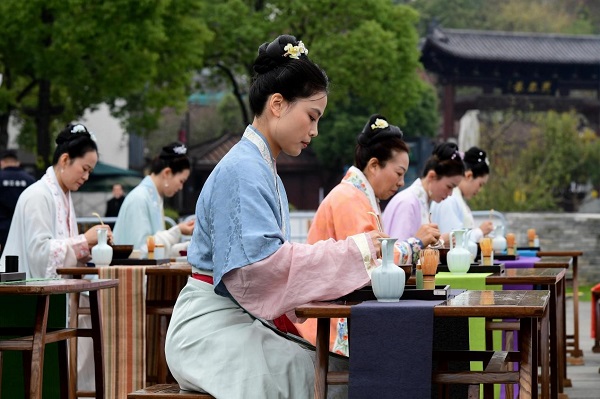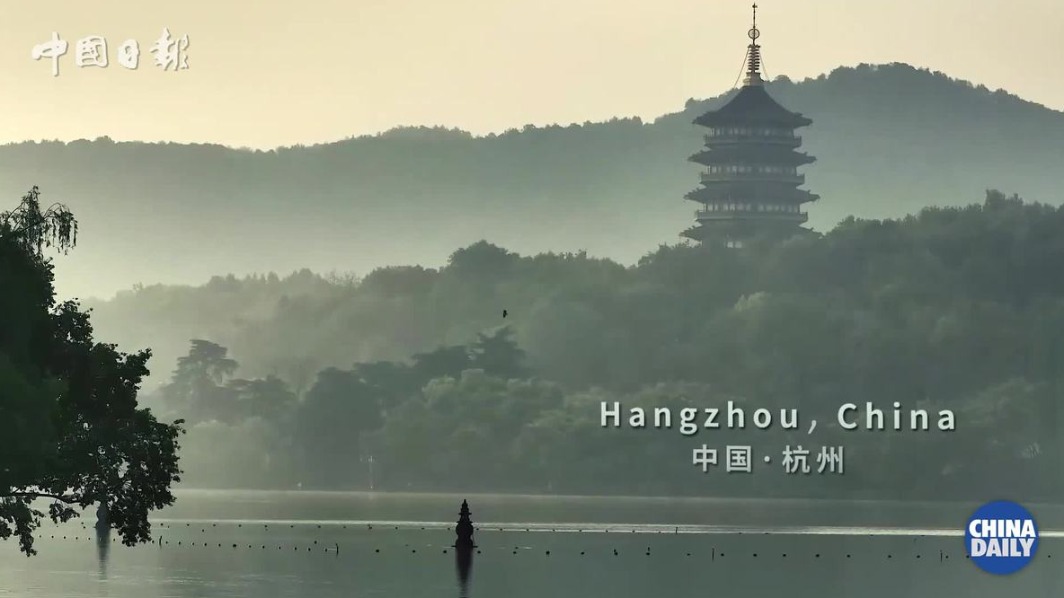chinese intangible cultural heritages shine brightly as protection and inheritance strengthened
the item "traditional tea processing techniques and associated social practices in china" was recently added to the intangible cultural heritage list of the united nations educational, scientific, and cultural organization (unesco).
china now has 43 items on the intangible cultural heritage list, continuing to be the most enlisted country in the world.
the traditional tea processing techniques and associated social practices in china consist of knowledge, skills, and practices concerning the management of tea plantations, picking of tea leaves, manual processing, drinking, and sharing of tea.
the item concerns 44 chinese national tea-related cultural heritages in 15 provinces and regions, covering tea-making skills and related customs of green tea, black tea, oolong, white tea, fermented tea, yellow tea and processed tea.

photo taken on dec. 8, 2022 shows the beautiful scenery of a cherry valley on wuliang mountain in yi autonomous county of nanjian, southwest china's yunnan province. the blooming cherry blossoms and the tea gardens constitute a beautiful scenery, attracting flocks of tourists. (people's daily online/shi zhihong)
tea originated in china and is popular around the world. it is not only a healthy drink but also an advertisement for chinese culture. tea-planting and tea-making enjoy a long history in china. tea-making skills have been inherited by generations and are shared and cherished by many ethnic groups in the country. tea is also an "envoy" that has facilitated trade exchanges and cultural communication. it vividly mirrors cultural diversity and the creativity of civilizations.
tea reflects how china gets along with the world and enlightens people. the inscription will surely assist in the protection and inheritance of tea culture, better showcase china's achievements in intangible cultural heritage protection, and bring tea culture to more and more people around the world.
many promotional activities were launched across china to popularize knowledge about tea and spread the tea culture. for instance, central china's hunan province held an activity to showcase the making of qianliang tea, fuzhuan brick tea, and junshan yinzhen tea, which are all china's national intangible cultural heritage items. hangzhou, in east china's zhejiang province, launched a tea art performance to help chinese tea culture gain more public attention.
what belongs to a nation also belongs to the world. in china, there are numerous other cultural treasures like the tea culture.
for instance, the countdown video featuring the 24 solar terms at the opening ceremony of the beijing 2022 olympic winter games amazed the world. at the fifth china international import expo, performances about chinese intangible cultural heritages attracted large groups of people.

tea enthusiasts whisk tea during a tea experience activity held at a park in jinhua city, east china's zhejiang province, dec. 8, 2022. whisking tea, once a tea culture in the song dynasty (960-1279), is an intangible cultural heritage item. (people's daily online/shi bufa)
chinese cultural heritages, which carry the genome of the chinese culture, connect the ancient and the modern, bridging china and the rest of the world. they boost chinese people's cultural confidence and inject positive energy into the exchanges and communication between chinese and foreign civilizations.
what makes intangible cultural heritages attractive is their history, while inheritance and innovation make them energetic. many chinese items of diverse types have been included in the world intangible cultural heritage list, contributing chinese strength to global cultural diversity and offering chinese plans for the protection of global intangible cultural heritages.
to better inherit the item "traditional tea processing techniques and associated social practices in china," relevant communities, groups, and individuals in the country have established protection teams, held training courses, and built research bases so that more people could be involved in the inheritance of the tea culture. these efforts not only revitalized tea-making skills, but also the fine tradition of the chinese nation and the history of the chinese culture.
in recent years, there has been a craze for intangible cultural heritages. empowered by digitalization and facilitated by technology, relevant industries have achieved development and upgrading.

the fifth china international import expo (ciie) opens on nov. 4, 2022 at the national exhibition and convention center in shanghai. the shanghai intangible cultural heritage hall, jointly initiated by the information office of the shanghai municipal government and the culture and tourism bureau of shanghai, makes debut at the press center of the ciie. (photo from the wechat account of the shanghai intangible cultural heritage protection center)
traditional crafts have embraced innovative progress through cross-industry collaboration, and intangible cultural heritage items, which have embraced modernity and fashion, are winning the hearts of many people.
intangible cultural heritage inheritors are introducing their skills in local residential communities and schools. intangible cultural heritages become more glamorous as people know about them.
from art performances with local features and reflecting modern aesthetics to exquisite and pragmatic crafts, folk customs and industries for rural vitalization, intangible cultural heritages have been effectively protected during the process of inheritance and properly utilized based on effective protection, satisfying people's growing aspiration for a better life and bursting with vigor.
"taking the entry of the traditional tea processing techniques and associated social practices into the unesco as an opportunity, the government will pay more attention to the tea industry, tea culture, and tea-related technology," said lu chengyin, a researcher at the tea research institute of the chinese academy of agricultural sciences.
lu added that an important way to carry forward fine traditional chinese culture is to do a good job of inheriting, protecting, and utilizing intangible cultural heritages. in the future, china will develop products with local characteristics through the use of crafts included in the intangible cultural heritage list to satisfy the diverse consumption needs and enhance citizens' sense of satisfaction and gain.
-
'nice' to meet you, hangzhou
may 6, 2024

